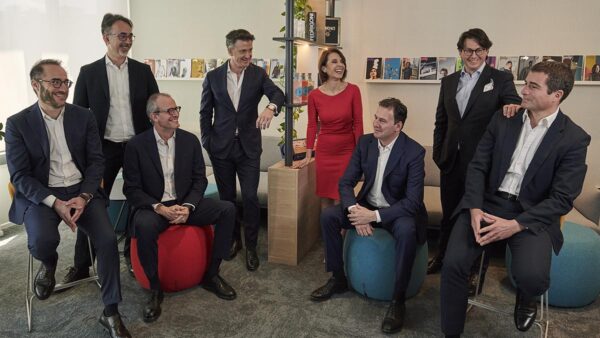Our widespread model
Fedrigoni sustainability culture means our daily actions are carried out with clarity, transparency, responsibility and competence. We are interested in the involvement of the whole company, at every level, and in identifying a structure for sharing goals, practices, critical issues and ideas. We have called our approach to sustainability governance the ‘widespread model’ because the responsibilities are spread throughout all the company departments.
Stakeholder Engagement
At Fedrigoni we foster interactions and relationships of trust with all our stakeholders.
Our people are the driving force behind the company and the main ambassadors of the Fedrigoni brand in the world: We assign various activities to them to create a healthy and inclusive working atmosphere. Then there are the shareholders and the Board, i.e. the private equity fund and the family shareholders, who are constantly at our side to achieve the ESG goals. Our customers (printers, converters, brands, designers) are crucial and we maintain constant contact with them, being linked by a mutually stimulating relationship and partnership to achieve common goals. Our relationship with the financial community and investors is also a key factor, to whom we regularly report our ESG performance at least four times a year. We also regularly dialogue with the institutions and local communities where we operate. Finally, there are our suppliers, who are increasingly essential players for us to achieve the ESG goals, including the energy transition.
Employees
Indagini di clima aziendale;
Business climate surveys;
Opportunities for development plans;
Involvement in the Sustainability Team;
Two-way communication on company social networks;
Environmental initiatives during working hours;
Showrooms in corporate spaces displaying the finished products of customers who use our papers and labels.
Shareholders and the Board
Quarterly disclosure of key ESG performance;
Involvement in updating the materiality matrix.
Customers
Regular meetings to boost our customers’ creativity;
Involvement in updating the materiality matrix;
Net Promoter Score Paper customers of 63 in 2022 (67 in 2021), third-party verified;
Net Promoter Score Self-Adhesives customers of 51 in 2022 (61 in 2021), third-party verified;
Fabriano Boutique;
Fedrigoni Top Award, since 2005 our biggest celebration of craftsmanship and creativity. This is the only award in the world dedicated to graphic designers, printers, and brands who win as members of a single project team.
Financial Community
Quarterly disclosure of our key ESG performance;
Involvement in updating the materiality matrix.
Local Communities
Environmental initiatives to support the community during working hours;
Drawing Festival;
All of the Fedrigoni Fabriano Foundation’s activities;
Partnership with InspirinGirls International, an international NGO that connects girls with female role models from different backgrounds who can encourage them to follow their own inspirations, free from stereotypes;
Support to ProInfants, a Spanish nonprofit organization for children active in India and South America.
Suppliers
Workshops with suppliers of energy, materials, and machinery to find solutions with lower CO₂ impact.











